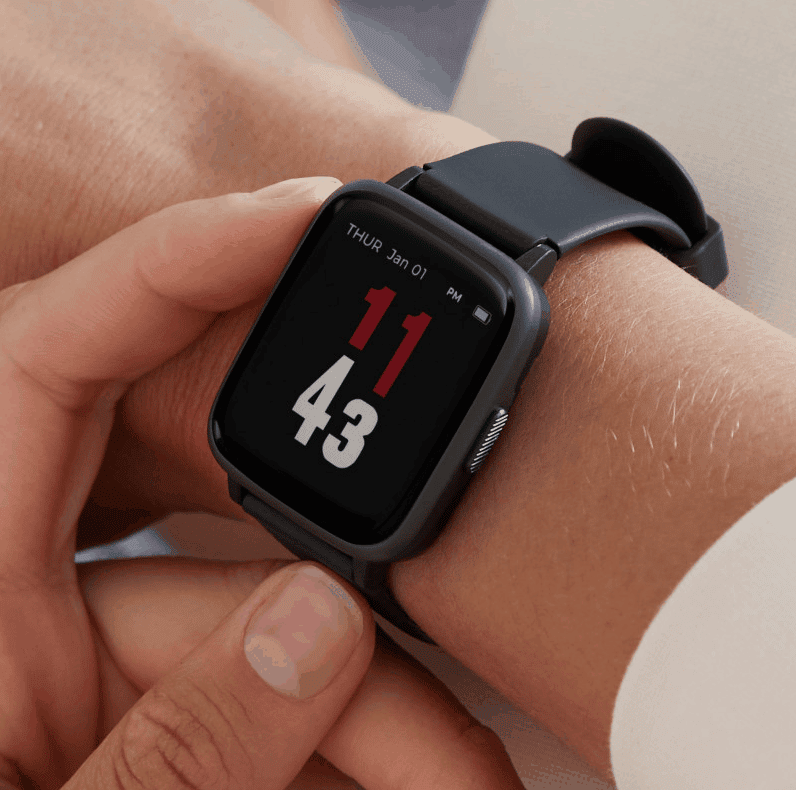Parfait allié de la remise en forme et de la musculation, le cardio training est en premier lieu une activité visant à renforcer le cœur. En pratiquant les activités cardiovasculaires, vous aurez une meilleure endurance et aiderez votre organisme à lutter contre le cholestérol et d’autres maladies comme le diabète entre autres pour ne pas toutes les citer.
Sommaire
Forme et bien-être : Les secrets du cardio training
Le cardio training est donc bon pour la santé d’avoir un système cardio au top. En plus, le cardio vous permettra de réduire votre anxiété, jouera donc sur la gestion du stress et enfin affinera votre silhouette. En bref, vous aurez une meilleure condition physique et vous vous sentirez mieux dans votre corps grâce à cette activité sportive.
Il peut être pratiqué en salle de sport ou chez soi et même en extérieur. Vous avez le choix entre de nombreux types d’exercices, selon vos envies et votre état de santé.
Pour qu’une séance de cardio soit la plus efficace possible, il est nécessaire de respecter certaines règles de base, notamment sur le timing, la fréquence et le déroulement de la séance.
Quel est le moment idéal pour faire du cardio-training ?
Le cardio-training se pratique quand vous voulez et où vous voulez. Par ailleurs, voici quelques conseils pour vous aider à établir votre planning :
- Il est plus judicieux si vous travaillez en journée de planifier vos séances d’entraînement vers la fin de l’après-midi. Mais au final, peu importe l’heure d’entrainement si cela vous convient à vous.
- Si possible, programmez vos séances de cardio-training et de musculation à 2 jours différents. Sinon optez pour 20 à 30 minutes avant ou après votre séance.
- Votre calendrier très chargé ne vous permet-il pas d’alterner les séances de cardio et de musculation ? Ne vous inquiétez pas ! Faites juste attention à votre alimentation en adoptant une répartition des macros correctement. Prenez les compléments nécessaires et seulement nécessaires avant de manger correctement après les exercices. En effet, il est dit que la fenêtre anabolique est favorable seulement 1 heure après l’entrainement mais pour certaines études récentes c’est jusqu’à 48 heures.
- Prévoyez 1 à 2 jours entiers de repos complet par semaine. C’est très important, car cela permettra à votre corps de récupérer. Certaines personnes s’entrainent par exemple 5 jours par semaine et le sixième jour pratiquent leur cardio plus longtemps. Organisez-vous et créez vos propres habitudes.
Quand faire le cardio ?
Le cardio peut être effectué avant ou après la séance de sport. C’est à vous de décider ce que vous souhaitez selon vos objectifs, vos envies et votre forme. Il y a des jours ou nous sommes plus fatigués que d’autres, il est donc essentiel d’écouter son corps.
Avant l’entraînement
Le cardio peut être un bon échauffement et vous permettra de préparer votre corps à une activité physique. Le fait de bien s’échauffer et de boire beaucoup vous évitera également les différents problèmes de crampes et de courbatures.
Comment vous y prendre ? Commencez par faire 5 de minutes de marche pour chauffer vos muscles puis encore 10 ou 15 minutes minimum à une intensité plus modérée en courant. Ensuite, faites quelques étirements pour débloquer vos articulations et commencez votre séance.
Après l’entraînement
Vos muscles sont déjà chauds et certaines personnes privilégient le cardio après la séance tout simplement par peur de ne plus avoir assez d’énergie pour assurer correctement sa session de musculation. Du coup, inutile de faire de la marche pour commencer, vous pouvez faire vos 20 à 30 minutes de cardio après sans problème.
N’oubliez pas de bien vous hydrater par petites gorgées pendant cet effort.
Je n’aime pas le cardio, comment faire ?

Le conseil à suivre lorsque nous n’aimons pas les exercices de cardio sur tapis de course, ou si nous ne sommes pas habitués, c’est de commencer par faire 10 minutes seulement pendant 1 à 2 semaines. Par la suite, vous rajoutez 10 minutes les semaines suivantes puis 10…
En effet, il vaut mieux faire 10 minutes de cardio que rien du tout. En y allant progressivement, cela peut aider à vous apprendre à apprécier cette activité. Regardez des vidéos pendant le cardio est un bon moyen de ne pas voir passer le temps.
Autre solution, vous pouvez également remplacer le cardio sur tapis par la corde à sauter, le jumping Jack ou le rameur. L’important, c’est de transpirer et brûler des calories !
Dois-je faire du cardio en prise de masse ou pour la perte de poids ?
Il va sans dire que pour la perte de gras, c’est une très bonne alternative en plus d’avoir une diète correcte mais pas obligatoire. Il n’est pas nécessaire de faire du cardio lorsque vous voulez mincir si vous commencez par adopter une alimentation en déficit calorique.
Mais vous pouvez en faire lors de votre sèche en y allant progressivement. Cela vous permettra d’augmenter vos calories et vous aidera dans votre but.

ENVIE D’UN PHYSIQUE ULTRA SEC ET VOLUMINEUX ?
Le cardio est bon pour le coeur donc peu importe l’objectif. Si vous êtes en prise de masse, rien ne vous empêche d’en faire aussi mais là par contre beaucoup moins car le but étant de construire du muscle, vous ne devez donc pas être en déficit calorique mais en surplus.
Assurez-vous donc si vous décidez d’en faire de ne pas trop brûler de calories et donc de ne pas en faire pendant 1 heure. Cela serait contre productif pour la prise de muscle que vous êtes en train de faire.
Y a-t-il une fréquence idéale ?
La fréquence va être définie en fonction de votre niveau, de votre organisme et vos buts à atteindre. Pour les personnes débutantes, il est recommandé de pratiquer le cardio 1 fois par semaine durant les 2 ou 3 premières semaines à raison de 20 minutes. On peut ensuite passer à 2 fois par semaine par la suite.
Il n’est pas conseillé pour les personnes en surpoids de pratiquer le cardio haute intensité ou de la course. En effet, à cause de ce paramètre, les articulations et tendons seront mis à rude épreuve. Il est donc conseillé de commencer plutôt par de l’elliptique par exemple ou du vélo. Cela entrainera moins de risques pour les genoux.
Vous faites partis des personnes ayant un niveau intermédiaire ? Commencez par l’entraînement long. Si vous vous entraînez 2 fois par semaine, vous pouvez débuter par 2 circuits longs, puis alterner en faisant 1 circuit long et 1 circuit court par semaine. Lorsque vous serez à 3 entraînements par semaine, vous pourrez faire 2 circuits longs alternés avec 1 circuit court.
Quand faire du HIIT cardio ?
LE HIIT cardio qui signifie en anglais High intensity interval training est un entrainement de cardio qui alterne le cardio modéré et de forte intensité. Il peut y avoir un temps de récupération entre les deux et ce circuit training doit être répété plusieurs fois.
Ce cardio est préconisé pour les pratiquants confirmés. Celui-ci vous fera perdre du poids et surtout lorsque vous arrêtez l’activité, vous continuerez à bruler des calories dans les heures qui suivent la séance. La méthode TABATA peut être un bon moyen également.
Conclusion
Il y a énormément de choix pour faire du cardio. Qu’il soit sur tapis roulant ou en circuit, vélo d’appartement, Zumba pour les femmes ou cours collectifs d’aquabiking… Que ce soit du cardio lent, modéré ou HIIT cardio, il s’agit de choisir l’activité qui vous plaît. Cela doit dépendre des objectifs à atteindre : pour votre renforcement musculaire, pour brûler les graisses et un maximum de calories, compléter un entraînement, pour rester en bonne santé ou pour vous échauffer avant une séance de musculation. Le choix vous appartient !
Enfin, sachez que vous brûlerez plus de calories en faisant une séance de musculation de 45 minutes qu’en faisant du cardio lent pendant le même temps. Dans toutes les salles de sport aujourd’hui, vous trouverez un espace cardio training. Le mieux étant de pratiquer les deux, quoi qu’il en soit ils seront bons pour votre métabolisme.
Si vous le souhaitez, vous pouvez faire le test grâce à la montre cardio ci-dessous.

Notez bien : le cardio lent à vitesse modérée est également appelé LISS ou Low Intensity Steady State. Le cardio court à haute intensité, quant à lui, est connu sous l’appellation HIIT ou High Intensity Interval Training.






